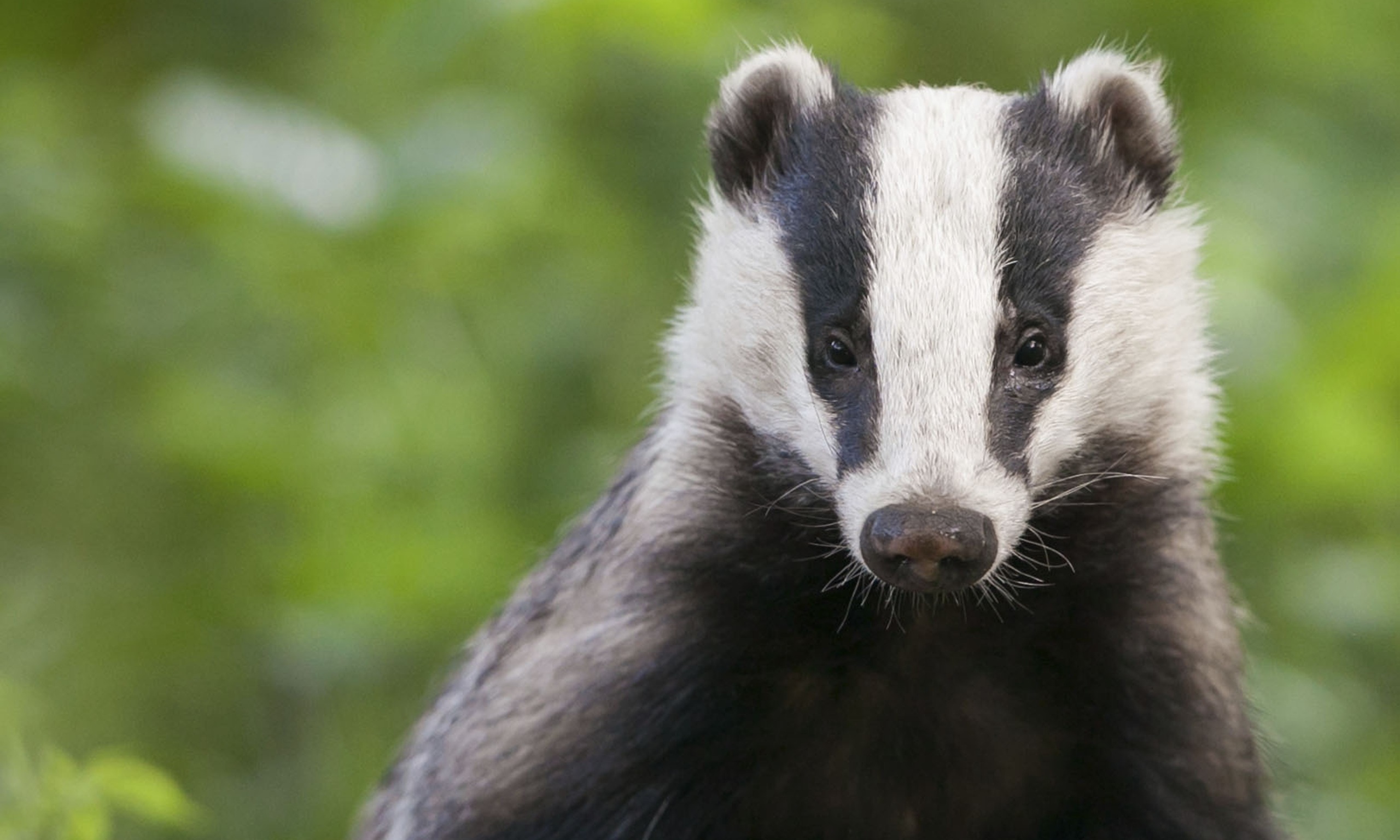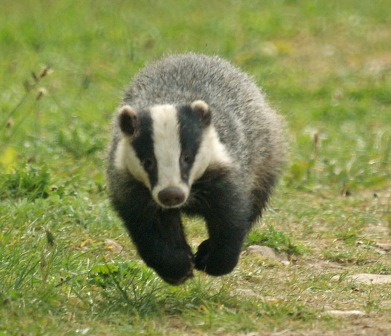
Badgers are two-foot-long mustelids with short, strong legs, squat, broad bodies, and forelegs having claws that are efficient burrowing tools. They are nocturnal, heavily furred, and very strong. Badgers live in deep burrows on and in prairies, woods, or hills. Like other mustelids, they have perineal glands which make fetid musk. Their pelts are valued garment furs. American badgers are found in western North America, east to Ohio and north to southern Canada. Their shaggy fur mixes gray, black, and brown hair. They eat field mice, squirrels, and gophers, digging animal prey out of underground homes. European badgers are like American badgers in size and color, but have teeth designed for omnivorous diets. They live in forests in deep burrows, and their litter size is four or five young. These badgers eat fruits, nuts, eggs, birds, rodents, frogs, snails, worms, and insects, and love honey and wasp or bee larvae. Shaggy hair protects them frombeing stung. All badgers are quarrelsome. Caged together, they fight continually. They are also very brave and fight savagely, if cornered.
Badger Facts
Classification:
Kingdom: Animalia
Subkingdom: Bilateria
Phylum: Chordata
Subphylum: Vertebrata
Class: Mammalia
Order: Carnivora
Family: Mustelidae
Subfamilies: Melinae (badgers, six genera, eight species),
Mellivarinae (honey badger)
Geographical location: Worldwide, except Antarctica,
Australia, South America, and the Sahara
Habitat: Forests
Gestational period: From one to two months
Life span: Up to fifteen years
Special anatomy: Paws with sharp digging and
grasping claws, luxurious fur, webbed feet in
otters
Other popular Animals
Photo Gallery of - Badger








 Animalia Life
Animalia Life